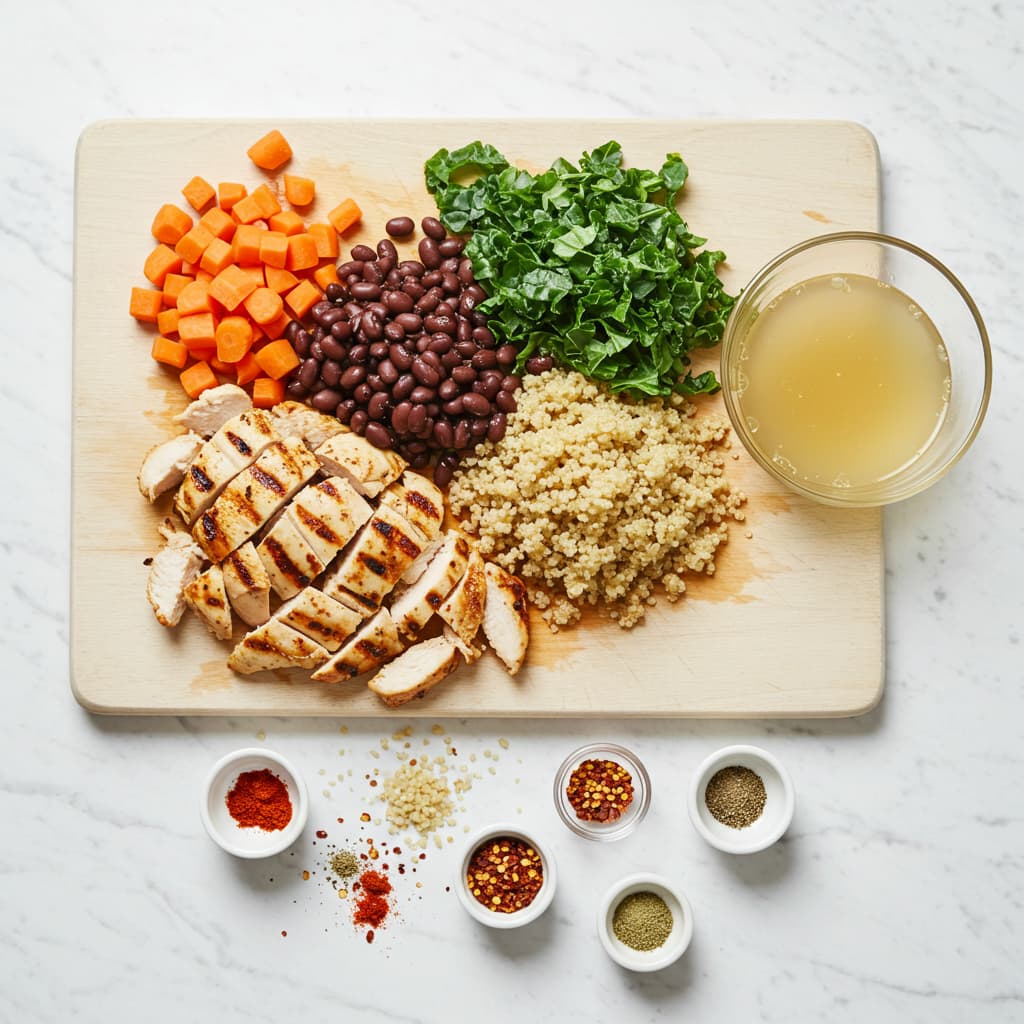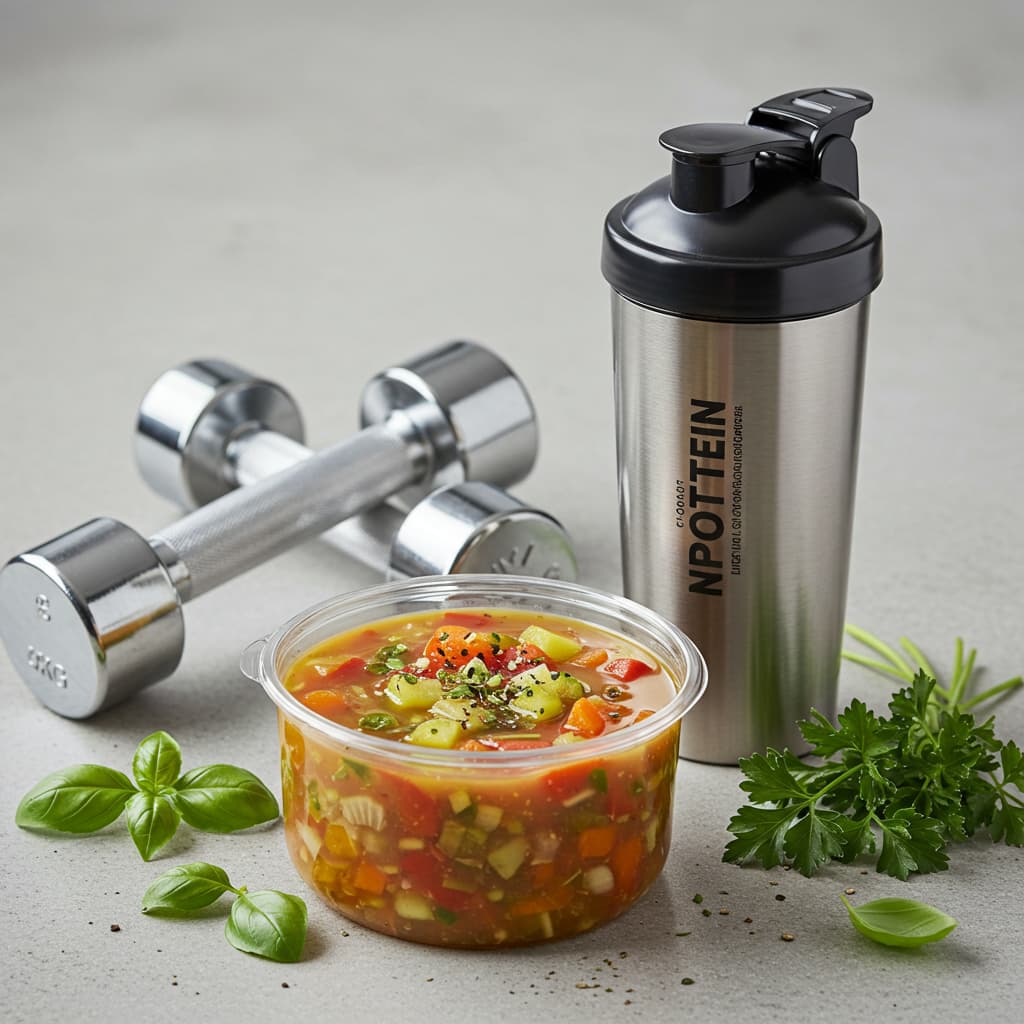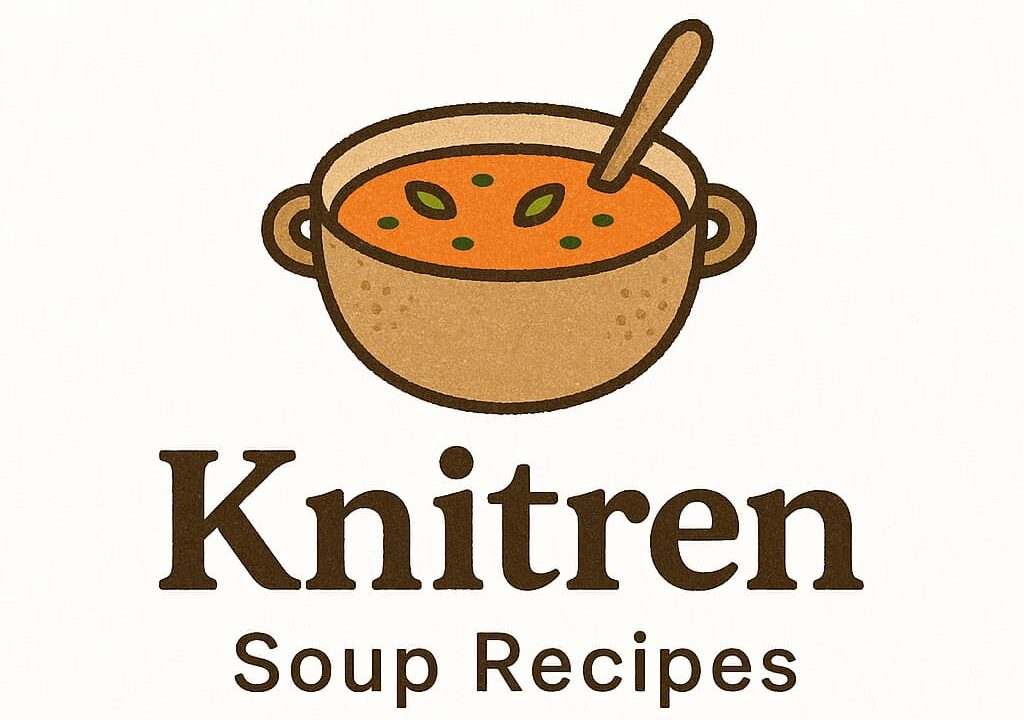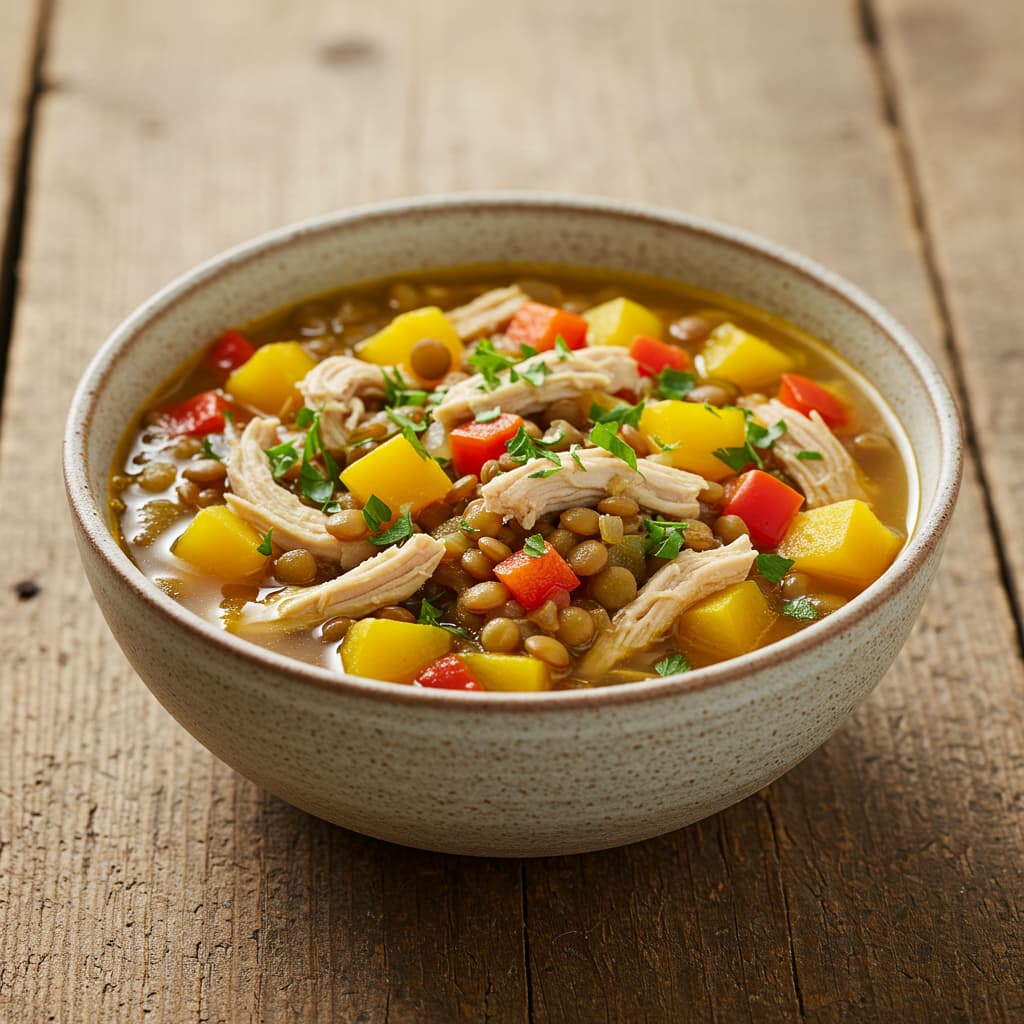Introduction
Tired of bland, watery soups that leave you hungry an hour later? You’re not alone. Many soup recipes promise satisfaction but deliver little nutritional value, especially when it comes to protein content. This high protein soup recipe delivers rich flavor while packing enough protein to keep you full and satisfied for hours.
After developing recipes for health-conscious clients for over a decade, I’ve perfected the art of creating soups that are both nutritionally dense and incredibly delicious. The high protein soup recipe I’m sharing today has become a staple in many meal prep routines because it’s versatile, satisfying, and supports various fitness goals.
In this guide, I’ll walk you through everything from selecting protein-rich ingredients to mastering cooking techniques that preserve nutrients. Plus, you’ll discover variations to suit dietary restrictions and helpful storage tips to make meal planning a breeze.
Table of Contents

Why This High Protein Soup Recipe Works
- Uses budget-friendly protein sources that won’t break the bank
- Requires just one pot, minimizing cleanup and simplifying the cooking process
- Delivers 25+ grams of protein per serving while keeping calories reasonable
- Get ahead with your meals! This recipe is ideal for meal prepping and actually improves in flavor overnight.
- Easily customizable for different dietary needs (keto, paleo, vegetarian options)
- Freezes beautifully for quick future meals
Choosing the Right Proteins
Best Protein Sources for Soup
Lean meats such as chicken breast and turkey are fantastic protein sources, offering great nutrition without a lot of excess fat. For beef lovers, lean ground beef (90/10) or cubed sirloin add rich flavor while keeping the soup relatively lean. Plant-based options like lentils, chickpeas, and quinoa work wonderfully for vegetarians, offering complete proteins when combined properly.
Buying Tips
For animal proteins, look for no-antibiotics and hormone-free options when possible. With chicken, boneless skinless breasts offer the highest protein-to-calorie ratio, though thighs provide more flavor. When using beans or legumes, low-sodium canned varieties save time, but dried versions are more economical for batch cooking.
Smart Substitutions
Short on chicken? Swap in turkey, tofu, or white fish like cod. If beef is called for, consider substituting lean ground turkey with beef bouillon for a similar flavor profile. For plant-based options, tempeh or seitan can replace animal proteins in most recipes while maintaining high protein content.
Ingredients & Prep
Protein Prep Essentials
Trim visible fat from meats before cooking to keep your soup lean. For beans and legumes, rinse canned varieties thoroughly to reduce sodium content. If you’re using harder proteins such as chicken breast, make sure to cut them into equal-sized pieces (about 1-inch cubes). This is key for ensuring they cook evenly throughout.
Flavor Base Components
Start by building a rich flavor base with a classic mirepoix – a combination of diced onions, carrots, and celery – sautéed in a small amount of olive oil. Garlic, bay leaves, and fresh herbs like thyme and rosemary elevate the flavor profile without adding calories. Umami-rich ingredients like mushrooms, tomato paste, or a dash of soy sauce intensify savory notes.
Broth Selection
Choose low-sodium broths as your foundation—either chicken, beef, or vegetable depending on your protein. For extra protein, consider bone broth, which delivers additional collagen and amino acids. Making your own broth from previous meal prep is ideal, but quality store-bought options work well too.

Step-by-Step Cooking Instructions
Pre-Cooking Prep
- Prepare all proteins: trim fat, cut into uniform pieces, and season lightly with salt and pepper
- Chop all your vegetables into similar sizes to ensure they cook evenly.
- Measure out dried herbs and spices
- Rinse canned beans or pre-soak dried legumes if using
Cooking Method
- In a large Dutch oven or heavy pot, heat 1 tablespoon olive oil over medium heat
- Add onions, carrots, and celery, sautéing until onions are translucent (5-7 minutes)
- Stir in the garlic and cook for about 30 seconds, just until it becomes fragrant.
- If using ground meat, add now and brown thoroughly
- If you’re including meat, add the cubed pieces and sear them on all sides
- Pour in broth, add herbs, and bring to a gentle boil
- Reduce heat and simmer until proteins are cooked through (15-20 minutes for chicken, 25-30 for beef)
- Add beans or legumes during the last 10 minutes of cooking
Doneness Check
Ensure meat proteins reach proper internal temperatures: 165°F for poultry, 145°F for fish. For plant proteins, taste-test for tenderness—beans should be easily smashed against the side of the pot but not mushy.
Final Adjustments
Allow soup to rest for 5-10 minutes before serving. This allows flavors to meld and proteins to relax for better texture. Taste your dish and adjust the seasonings as needed. For an extra bright finish, consider adding fresh herbs, a squeeze of lemon, or a splash of vinegar.
Pro Tips for Perfect High Protein Soup
Avoiding Common Pitfalls
- Don’t boil soups aggressively after adding proteins—this toughens meat and makes beans fall apart
- Add acidic ingredients (tomatoes, lemon) later in cooking when using beans to prevent them from remaining tough
- Consider blending a portion of bean soups for creamier texture without adding dairy
- For clear broths, skim foam that rises to the surface during cooking
Tool Recommendations
An immersion blender helps create creamy texture without adding fats. A large Dutch oven distributes heat evenly for gentle simmering. For meal prep, invest in quality glass containers with secure lids to prevent leaks.
Storage & Reheating
Store cooled soup in airtight containers for up to 4 days in the refrigerator. For freezing, leave an inch of headspace to allow for expansion. For convenient meals on busy days here in Fes, freeze the soup in individual portions for up to 3 months. Reheat gently on the stovetop or microwave until just hot—overcooking during reheating will toughen proteins.
Flavor Variations
Spicy Protein Power
Transform your basic high protein soup with jalapeños, chipotle peppers in adobo, or red pepper flakes. For Asian-inspired heat, add sriracha or gochujang. Balance heat with a spoonful of Greek yogurt for added protein and cooling effect.
Keto/Paleo Options
For keto soups, emphasize animal proteins, low-carb vegetables (cauliflower, zucchini, spinach), and healthy fats like avocado oil. Thicken with pureed vegetables instead of starches. Paleo versions should exclude beans and dairy, focusing on bone broth, grass-fed meats, and plenty of vegetables.
Global Flavor Profiles
- Italian: Add cannellini beans, Italian sausage, kale, and finish with grated Parmesan
- Mexican: Use shredded chicken, black beans, fire-roasted tomatoes, cumin, and top with avocado
- Thai: Coconut milk, lemongrass, ginger, shrimp or chicken, and lime juice
- Indian: Red lentils, curry powder, coconut milk, and spinach for a dal-inspired soup

Serving Suggestions
Pair your high protein soup with a small portion of whole grain bread or a side salad for a complete meal. For added protein, top with a dollop of Greek yogurt, a sprinkle of hemp seeds, or a few slices of hard-boiled egg.
FAQs
Can I use frozen meat in my high protein soup?
Yes, but add approximately 50% more cooking time and ensure it reaches proper internal temperature. For best results, thaw meat first to prevent uneven cooking.
How can I increase the protein content further?
Add unflavored protein powder, nutritional yeast, or collagen peptides during the last few minutes of cooking. Alternatively, serve with a high-protein side like quinoa or top with seeds and nuts.
How does this high-protein soup recipe contribute to weight loss?
Absolutely! High-protein foods help you feel full for longer, promoting satiety. Keep portions reasonable and pair with non-starchy vegetables for a satisfying, calorie-conscious meal.
How do I make a vegetarian version that’s still high in protein?
Combine multiple plant proteins (beans, lentils, quinoa) to create complete amino acid profiles.For an umami-rich flavor and an extra boost of protein, add nutritional yeast. Consider adding tofu, tempeh, or seitan for texture variety.
Is this recipe suitable for preparation in a slow cooker or an Instant Pot?
Yes! For slow cookers, 4-6 hours on low works for most proteins. In an Instant Pot, use the sauté function for the initial steps, then pressure cook for 7-10 minutes (adjust based on protein type) with a natural release.
Conclusion
Creating a delicious, high protein soup doesn’t require culinary expertise—just quality ingredients and a few key techniques. The recipe and variations shared here provide a versatile foundation you can adapt to your taste preferences and nutritional needs.
Ready to transform your meal prep routine? Start with this high protein soup recipe tonight and enjoy the benefits of satisfying, nutritious meals throughout your week. Your body will thank you for the balanced nutrition, and your taste buds won’t feel like they’re compromising.



